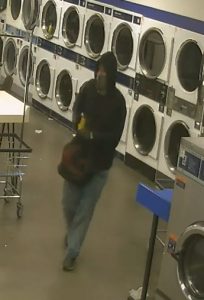Water Heaters- Tank or Tankless (On-Demand)
In all of my stores, I have Hot Water storage tanks. I say it this way as the setups are slightly different but the results are the same. I store around 100 gallons of Hot Water ready to go at a moments notice.
In two of the stores, this is accomplished with a standard 91 gallon, 199,000 BTU water heater. It’s a big tank with a burner underneath to heat the water. The other store has a separate burner unit. This unit has an internal pump that pulls water from the tank, heats it and sends it back.
When I was building my newest store I focused a lot on getting the volume of water needed to the machines fast. This store has a much larger number of large capacity washers than my other stores and I was doing a complete renovation so this was the time to do it right.
Some background, Years ago I owned a 3-acre property beside a river. I wanted to install irrigation piping as it was very sandy and I wanted to grow a number of fruit trees and have a decent looking lawn. I talked to a few people about what piping to install, most suggested 2″ abs piping, you know the stuff that comes on big rolls. I did some calculations based on the length of piping and the pump I would be using (the pump was a high-pressure irrigation pump) and my calculations showed I would not actually get water out of the far end of the pipe due to elevation changes and pressure loss in the pipe.
I talked to a local farmer that had literally miles of underground irrigation piping and his advice was that I would never complain if the pipe was too big. So I ended up installing 500′ of 4″ and 300′ of 3″ piping.

This was the same pipe used by utility companies. The initial cost was not that much more, it used the same trench and in the end, I could spray water in 50′ diameter circles.
So with my latest Laundromat I used the same philosophy. The Water Department started it off for me. I needed a new supply from the main as I only had a 3/4″ connection. I asked for a 1 1/2″ but they only used 2″. So that was the base size for all of the piping right to the connections for the washers.
I explained to my plumber my reasoning and that every part of the system needed to be confirmed. The ball valves on the main piping were not a problem but I wanted to confirm the supply valves that the washer hoses connected to before he bought and installed all of them.
So why did I go with more traditional water heaters?
There is a trend towards on-demand water heaters in Laundromats and in many cases you need to install 2,3 or more of them. There are a couple of reasons for this:
#1- Two 3/4″ pipes don’t equal one 1 1/2″ pipe. To better explain this without getting too complicated I found this page in a search https://flexpvc.com/Reference/WaterFlowBasedOnPipeSize.shtml. With some standard pressures and velocity (Center , Yellow column) we can see that a 3/4″ pipe allows a volume of 23 Gallons Per Minute and a 1 1/2″ pipe has a volume of 81 Gallons Per Minute.

My 2″ pipe has a volume of 127 Gallons Per Minute.
So based on that alone you would need 4 on-demand units to allow the same amount of water to get to the washers with a 1 1/2″ pipe or 6 units for the 2″ pipe.
Chart number 2 on the page at the link above, takes out some of the variables and just shows the rate of GPM through an orifice, Here we see the difference between a 1″ and a 2″ as 53GPM and 329GPM (75 psi is the pressure at my store)
But that’s only one part of the equation.
#2- The Flow Rate through the water heater has to be determined. I did a search and pulled some information from a random On-Demand Water Heater:
- “Maximum flow rate of 10.0 GPM at 35°F temperature rise (4.7 GPM at 70°F rise)”
So let’s break that down:
Maximum flow rate 10.0 GPM- So now we would actually need 8 units to meet the capacity of our 1 1/2″ pipe or 13 units for the 2″ pipe.
But that’s not all it said…..
“35°F temperature rise (4.7 GPM at 70°F rise)”. What does that mean? If you want to supply 120°F water the incoming water cannot be below 85°F.
Now if your incoming water is more of a standard 50°F then you are only going to get 4.7 GPM. How does this happen? The Water Heater will reduce the flow through the unit to maintain the outlet temperature.
81 Gallons Per Minute divided by 4.7 = 17 Water Heaters.
But do I really need 80 to 100 GPM in my store?
Based on the chart we looked at above a 1/2″ pipe can move 14 GPM. Now the actual valve inside the washer may reduce this so lets say 10 GPM actually flows into the washer.
With a 1 1/2″ pipe and 17 On-Demand Water Heaters we could fill 8 washers at a time before we start to reduce the fill time of the washers. This means longer cycle times and less turn over during busy times in your store.
So why not stick with a tank system? And run it at a higher temperature?
A typical tank style water heater has a Recovery @ 70 F Rise of 277 gph or 4.6 GPM. Although the recovery shows the same numbers as the on-demand the difference is that your volume of water through the Hot Water System is not reduced. So yes it is possible that the actual water temperature supplied to the washer is reduced this can be partially offset by setting the temperature to 140 instead of 120. And in either case the water sitting in the pipes will already have cooled so the actual in-washer water temperature will rarely be 120 °F.

At the end of the day, it takes a certain amount of BTU’s to heat a certain amount of water, all other variables being the same.
So what does all this mean to us as Laundromat owners?
Everybody is in a hurry and they hate wasting time on mundane tasks such as laundry, also as Laundromat owners we want to move people through the store as quickly as possible. It all boils down to cycle time.
Let me take a quick bounce back to an old store I used to own. I had 2- 45# Milnor washers among a bunch of top loaders and smaller front loaders. The water supply had about 40 psi, a long run from the main and the hot water system had 2 older Paloma On-Demand Water Heaters. A normal cycle with each washer took about 28 minutes. Some days with other washers running I timed this washer at almost 50 minutes per cycle. Why? The cycle time does not run during the fill cycle of the washers. Now some of the old Dexters I had ran a 25 minute cycle and didn’t care if there was even water in the drum.
So back to our On Demand vs Tank questions? If you want to maintain your cycle times, keep your customers from waiting too long and keep your store flowing on a busy day you have to be able to get the water to the washers.
To do this with On-Demand Water Heaters you have to be prepared for a worst case and then maybe back off 20% or 30%. The odds of every washer willing at exactly the same time is rare but it’s possible to have 70% filling at the same time. You have to consider volume as well as number of machines. That 60#, 80# or 100# is going to take a while to fill so it’s possible for the customer to start 2 or 3 more machines. We have all seen it where the customer fills all of the machines, adds the money and hits start all at once. That’s actually how I tested my new store.
I understand the trend towards On-Demand and the savings by not having a tank of hot water being stored but what are the other impacts to the store? Slower cycles? Reduced customer turnover? Frustrated customers?
What if a customer sets aside an hour to wash and dry clothes before heading to work, no problem 25-minute wash, 30 minutes dry, a few minutes to spare and they are off. No what happens when their washer is only at 19 minutes 35 minutes after it was started because the store is busy? Late for work or pack out wet clothes to the car? Do they care if the water was 105°For 120°F right now?
As with all of these posts, these are my opinions but I hope to give you some background and help you with making decisions before you have a problem.
What’s your preference and why?

Multi-Store Laundromat Owner, Business Coach, Author and Speaker.
Pictures are used as examples only. Data supplied from various sources and is not intended to represent the pictured units.



